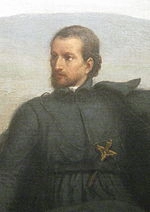How to Pronounce Jacques Marquette
#50
Most Popular
Boost
Jun 01, 1637 Laon, Hauts de France, France Died on 18 May 1675 (aged 37)
French Jesuit and explorer
GeminiJacques Marquette, Date of Birth, Place of Birth, Family, Facts, Age, Net Worth, Biography and More in FamedBorn.com

French Jesuit and explorer
Gemini